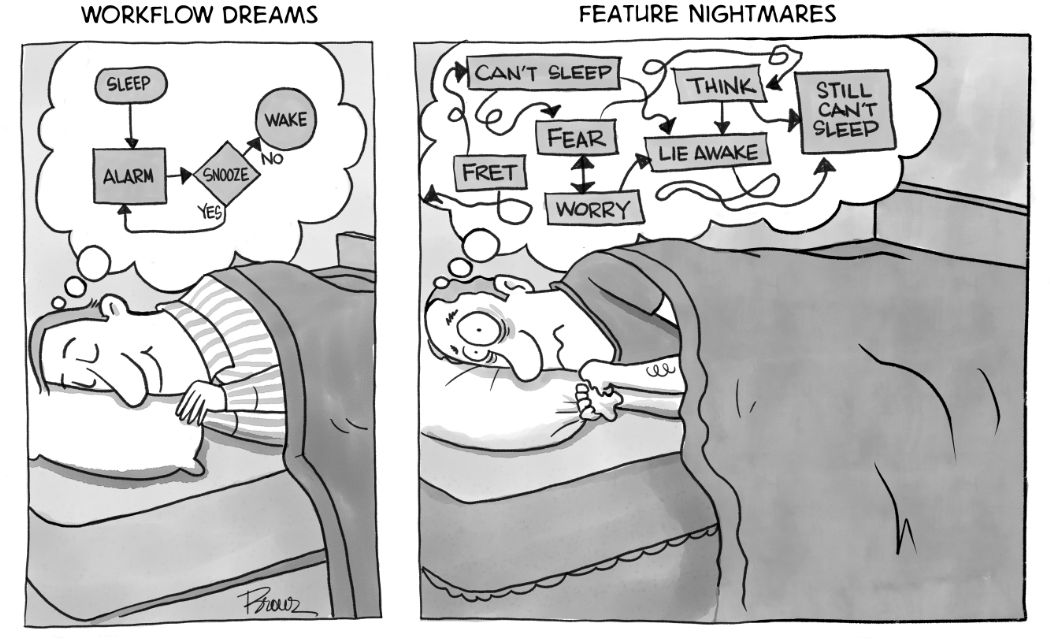If you’re like me, falling asleep is easy, but staying asleep is the real challenge.
At the end of a long day, exhaustion sets in, and it feels like you've done everything you can. But have you really?
This is the dilemma that product, engineering, and business leaders face in connected product companies. The to-do list is never-ending: more features, better user experiences, and cost optimizations—both in the physical and digital layers of your product.
The Pressure to Keep Adding Features to Connected Products
It feels like there's never enough resources and never enough time. No matter how much we achieve, the feature-driven, checklist-optimized approach keeps pushing the boundaries. But here’s the reality: focusing on features alone will never be "enough."
Why Features Alone Aren’t the Answer
Building more features, automating and integrating them, is a noble goal. But, this approach stops short of what's truly needed to deliver the outcomes that matter.
Workflows, not features, are what lead to meaningful outcomes. Workflows break down technology and operational silos. When workflows are in place, both you and your customers will sleep better at night.
How a Workflow-Centric Mindset Drives Transformation
Adopting a workflow-centric mindset workflow-centric mindset doesn’t mean features aren’t important. Instead, it’s about working backwards from outcomes and viewing features as a part of the solution and offering.
Embrace workflows during the day, and I guarantee you’ll sleep better at night.
Key Benefits of Embracing Workflows
- Outcome-Focused Results: Think beyond features and focus on customer outcomes.
- More Scale through Abstraction: Workflows are abstracted from atomic features.
- Destroy Silos: Break down silos across teams and technologies.
- Better Sleep for Leaders: Workflows deliver great experiences and less worry.

